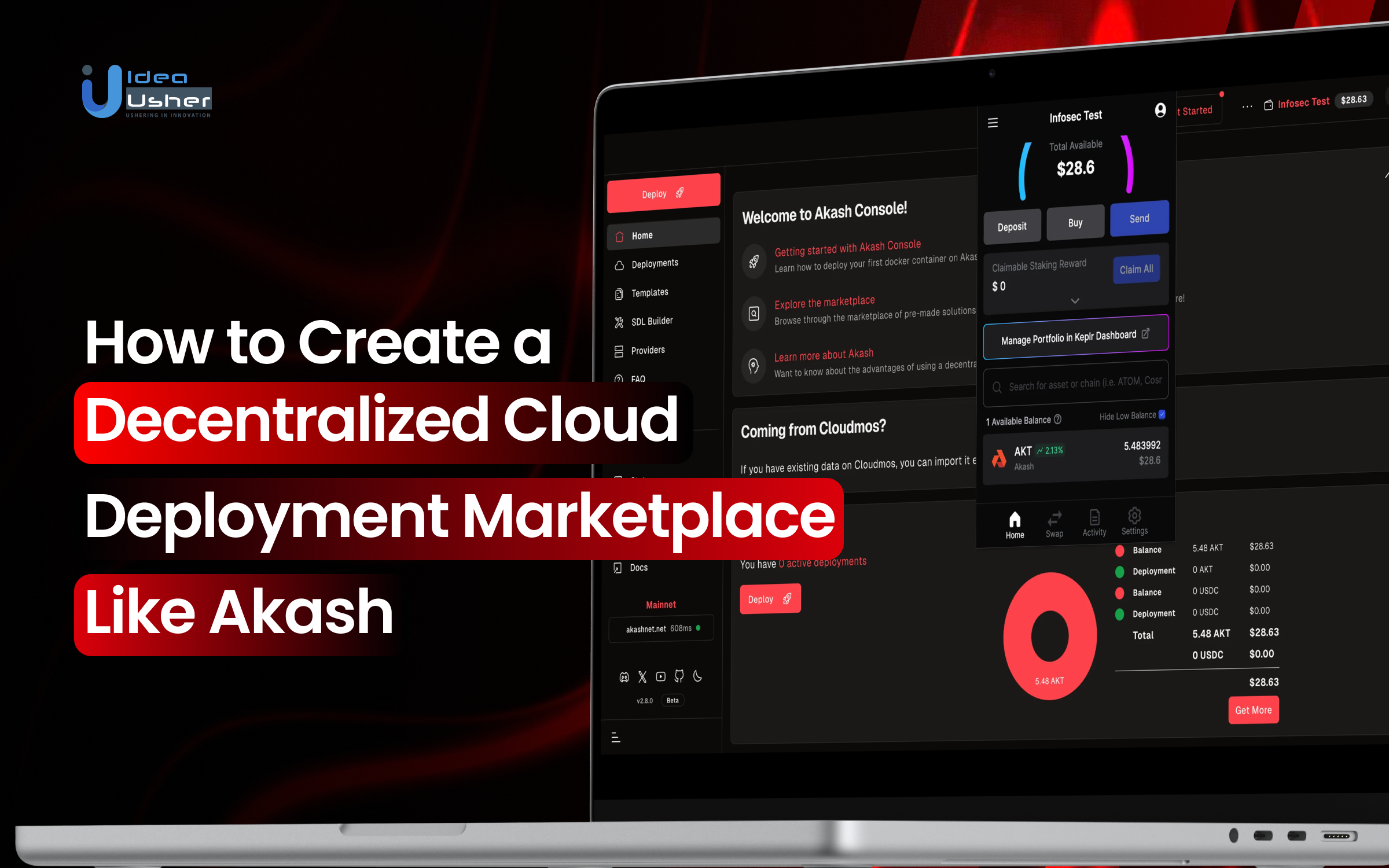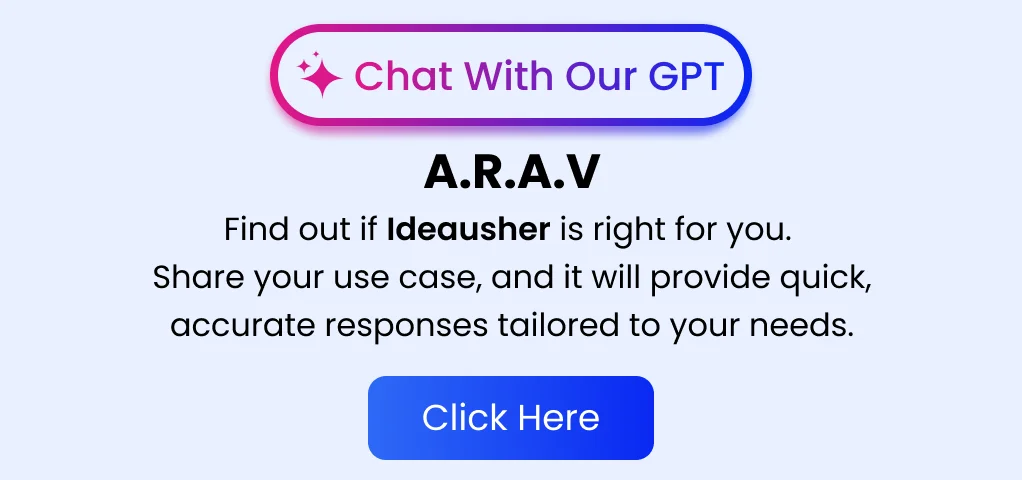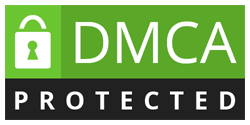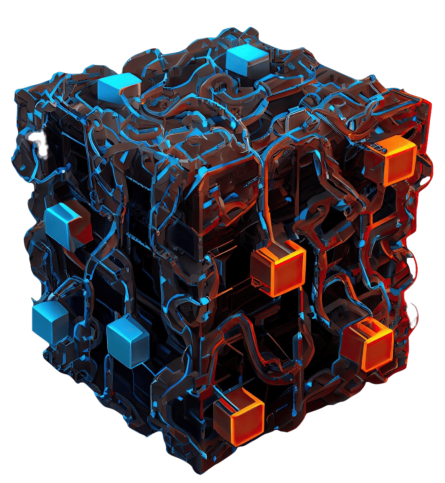As businesses face rising demands for data processing and cloud resources, many are starting to look away from the big players like AWS and Azure. The centralized model just doesn’t cut it anymore, especially with the explosion of AI and blockchain needs. This shift is driving the rise of decentralized cloud solutions like Akash, which offer not just better resilience and lower costs, but also more privacy and control.
It’s a game-changer, allowing businesses to use their unused computing power and creating a more flexible, sustainable way of managing infrastructure.
We’ve seen how decentralized cloud platforms can transform the way businesses manage infrastructure, enabling them to save costs and increase resilience. By leveraging decentralized storage and computational power, we’ve helped companies distribute their workloads efficiently. With our experience in building blockchain-based marketplaces, IdeaUsher is perfectly equipped to guide you through the process, which is why we’ve created this blog to show you how to start building a decentralized cloud deployment platform like Akash. Let’s start!
Key Market Takeaways for Cloud Deployment Marketplace
According to IndustryArc, the Decentralized Cloud Storage Solutions Market is set to grow significantly, reaching $1.2 billion by 2030, with a CAGR of 14.5%. This growth is driven by increasing demand for more secure, private, and cost-efficient alternatives to traditional cloud systems. As concerns about data security and high costs of centralized cloud services rise, businesses and users are turning to decentralized models that spread data across global networks.
Source: IndustryArc
Companies like Akash Network, Filecoin, Storj, Arweave, and Hivenet are leading this shift. Akash Network offers a decentralized marketplace for cloud computing, connecting resource providers with users at lower costs, often up to 85% less than traditional clouds.
Filecoin, Storj, and Arweave focus on decentralized storage, ensuring better privacy and data protection. Hivenet takes a unique approach, using everyday devices for a sustainable and scalable cloud solution that emphasizes environmental impact and data sovereignty.
These platforms are forming partnerships and integrating blockchain protocols to expand their reach. Akash, for example, uses its native AKT token and works with Cosmos Hub, enabling secure and transparent operations while reducing reliance on traditional cloud providers.

What Is a Decentralized Cloud Deployment Marketplace?
A decentralized cloud deployment marketplace is a peer-to-peer (P2P) network that allows users to buy and sell computing resources such as CPU, GPU, storage, and bandwidth without relying on traditional centralized cloud providers like AWS, Google Cloud, or Microsoft Azure.
Core Principles:
- Permissionless Access: Anyone, whether as a provider or consumer, can join the marketplace without the need for approval or intermediary authorization.
- Censorship Resistance: No single entity governs or controls the infrastructure, ensuring that no one can block or censor the use of resources.
- Cost Efficiency: Due to the open-market bidding system, the pricing of resources is dynamic and highly competitive, often making decentralized clouds more affordable than centralized alternatives.
- Blockchain-Based Trust: Blockchain technology, through smart contracts, automates tasks like payments and enforces service-level agreements (SLAs), making the system more transparent and secure.
- Resource Redundancy: Decentralized systems distribute workloads across various nodes, which improves availability and ensures that no single point of failure can disrupt the service.
Comparison with Centralized Cloud Platforms
| Feature | Decentralized Cloud (e.g., Akash) | Centralized Cloud (e.g., AWS) |
| Control | Distributed, community-governed | Controlled by a single corporation |
| Pricing | Dynamic (auction-based) | Fixed (vendor-determined) |
| Uptime Guarantee | Provider-dependent | SLA-backed (99.9%+) |
| Censorship Risk | Low (no central authority) | High (subject to regulations) |
| Cost | Typically 50-90% cheaper | Premium pricing |
Types of Decentralized Cloud Models
Decentralized cloud models include peer-to-peer networks, blockchain orchestration, and hybrid systems. Peer-to-peer allows leasing compute power, while blockchain automates deployment. Hybrid models combine compute and storage for full-stack apps.
1. Peer-to-Peer Compute Networks
Examples: Akash Network, Golem Network
In peer-to-peer computing networks, users lease unused computing power from individuals or data centers, creating a decentralized cloud infrastructure. This model is particularly useful for tasks like batch processing, AI/ML training, and rendering, where high computational resources are needed temporarily but cost-effectively.
2. Blockchain-Based Orchestration
Examples: Akash (Cosmos blockchain), Fluence (Ethereum).
Blockchain-based orchestration uses smart contracts to handle everything from deployment to payments and SLAs automatically. This removes the need for intermediaries, making the process more efficient and transparent. It’s perfect for trustless, automated cloud deployments where security and automation are key.
3. Hybrid Decentralized Clouds
Examples: Akash + IPFS, Ankr Network.
Hybrid decentralized clouds mix decentralized computing power with storage, like Filecoin + Akash. This setup ensures you get both the processing and storage needed for a full-stack solution. It’s ideal for building and running full-stack decentralized applications (dApps) that are resilient and scalable.
Overview of the Akash Cloud Deployment Marketplace
Akash Network’s mission is to democratize cloud computing by creating a marketplace that is open and permissionless, allowing anyone to buy and sell computing resources at a fraction of the cost of traditional cloud services.
Key Statistics
- Cost Savings: Up to 90% cheaper than AWS.
- Network Size: Thousands of active providers.
- Throughput: Supports Kubernetes-based container deployments.
- Uptime: Due to its distributed architecture, it offers resilience without the risk of centralized downtime.
Who Uses Akash and Why?
| User Type | Use Case | Why Akash? |
| Startups | Hosting web apps, APIs | Lower costs, no vendor lock-in |
| AI/ML Developers | GPU leasing for model training | Cheaper than AWS/Azure GPUs |
| Blockchain Projects | Running nodes (e.g., Cosmos validators) | Decentralized infrastructure |
| Enterprises | Backup cloud for hybrid deployments | Censorship-resistant fallback |
How Does the Akash Network Work?
Akash lets users deploy cloud workloads through a decentralized marketplace, where providers bid on jobs in a reverse auction.
Once a provider is selected, the workload is deployed on Kubernetes containers. Payments, monitoring, and SLAs are all handled via smart contracts for transparency and security.
- User Submits Deployment Manifest (SDL): The user defines computing needs in a YAML file, specifying CPU, GPU, RAM, storage, networking, and container images.
- Reverse Auction and Provider Bidding: The user’s request is broadcast, and providers bid to meet the requirements. The winning provider is chosen through a smart contract, with prices 70-90% cheaper than AWS.
- Deployment via Kubernetes Containers: The chosen provider deploys the workload on their Kubernetes cluster, using Akash Provider Services for scheduling, load balancing, and failover.
- Monitoring and Billing via Smart Contracts: Real-time monitoring tracks resource usage, while AKT tokens are used for automatic payments, based on uptime and consumption. SLA violations are resolved through on-chain arbitration.
1. Beyond the Reverse Auction: Ensuring Fairness
The bidding process on Akash is completely transparent, with all bids recorded on-chain to prevent any manipulation. Providers must stake AKT tokens, and if they misbehave, they risk losing them through slashing. Plus, they earn trust through a reputation system based on uptime, performance, and customer feedback.
Anti-Collusion Measures:
- Randomized Bid Selection: Even among equal bids, the selection process is randomized to prevent collusion.
- Time-Locked Bidding: This prevents “sniping” attacks during the final moments of the auction.
2. Resource Orchestration in a Decentralized Fabric
Akash tweaks Kubernetes with a custom scheduler to handle provider churn and balance cost/performance. It also allows workloads to span across multiple providers in federated clusters. Plus, Kubernetes auto-scales based on demand and available resources, ensuring flexibility.
3. Handling Provider Churn
Akash ensures uptime by having providers report their availability through a heartbeat system. If a provider goes down or slows down, workloads are seamlessly migrated to another provider. Persistent workloads also get time for a smooth migration, avoiding disruption.
4. Data Persistence and Stateful Applications
Akash supports stateful apps with two storage options: ephemeral storage, which is temporary and deleted after deployment, and persistent storage, which stays linked to volumes. For extra reliability, it also integrates with decentralized storage like IPFS or Filecoin. This ensures your data is safe and available when needed.
5. Trade-offs vs Centralized Storage
| Factor | Decentralized (Akash) | Centralized (AWS EBS) |
| Durability | 99.9% (depends on provider) | 99.999999999% |
| Latency | Variable (geographically distributed) | Consistent |
| Cost | 60-80% cheaper | Premium pricing |
| Migration | Requires manual setup | Automated snapshots |
Akash’s decentralized approach offers a more affordable, flexible, and secure alternative to traditional cloud services, with a unique focus on transparency and fairness.
6. Decentralized Network Connectivity
Akash provides dynamic IP leasing where providers offer public IPs from their pool. The lease duration matches the deployment length and integrates seamlessly with DNS. The network ensures secure communication with mutual TLS authentication and encryption for all inter-container communication.
7. Auditability and Trustless Verification
Akash ensures trust with on-chain verification, where providers submit resource proofs, and penalties apply for discrepancies. Independent auditors can also challenge claims and earn rewards for spotting issues. Plus, a reputation oracle tracks performance and calculates trust scores for providers.
8. Benchmarking and Performance Validation
Before providers can offer services on Akash, they must pass performance tests:
- CPU/GPU Performance: Providers’ hardware capabilities are benchmarked.
- Network Throughput: Network performance is tested to ensure high-quality service.
- Storage IOPS: Providers must verify their storage performance to handle the required workloads.
Why Businesses Are Turning to Decentralized Cloud Marketplaces?
Businesses are choosing decentralized cloud marketplaces for massive savings, no vendor lock-in, and affordable GPU resources. They also maintain control over data privacy and can scale globally without restrictions.
1. Cost Advantage
Businesses are turning to decentralized cloud marketplaces like Akash because they offer significant cost savings, often 80–85% cheaper than AWS. This market-driven pricing model helps companies reduce cloud expenses, making high-performance computing more affordable.
2. Infrastructure Independence
With decentralized cloud marketplaces, businesses avoid the risks of vendor lock-in and centralized control. They gain the flexibility to choose from a variety of providers, allowing them to switch or scale infrastructure without being tied to one central authority.
3. AI & ML Compute Needs
Decentralized marketplaces provide access to affordable GPU resources, which are crucial for AI and machine learning workloads. Companies can scale their compute power as needed without the high costs of traditional cloud providers, enabling faster and more cost-effective innovation.
4. Data Sovereignty & Privacy
Decentralized platforms ensure data ownership stays with users, offering enhanced privacy and control. There’s no backend data scraping or analytics, allowing businesses to maintain full control over their sensitive information, improving trust and security.

Benefits of Building a Decentralized Cloud Marketplace for Businesses
A decentralized cloud marketplace lowers costs through competitive bidding and pay-as-you-go models. It lets businesses scale resources efficiently and monetize unused capacity. Plus, it creates new revenue streams via token-based incentives.
Technical Benefits
1. Containerized Deployment Through Kubernetes
Decentralized cloud marketplaces like Akash use Kubernetes for container orchestration, providing standardized deployments, portability, and automated scaling. This allows businesses to run workloads seamlessly across providers without vendor lock-in, ensuring efficient resource usage and high availability.
2. Seamless Horizontal Scaling
Unlike traditional clouds, decentralized marketplaces offer automatic load balancing and on-demand resource allocation, allowing businesses to scale up or down based on real-time demand. This cost-efficient scaling helps avoid overprovisioning, saving money by only paying for the resources used.
3. Fault Tolerance Through Node Redundancy
With a decentralized architecture, workloads run across multiple independent nodes, ensuring no single point of failure. Automatic failover and self-healing systems maintain uptime, allowing businesses to remain resilient even if individual providers experience downtime.
Business Advantages
1. Drastically Reduced Operating Costs
Decentralized marketplaces reduce cloud costs by eliminating middlemen and competitive bidding through reverse auctions. This often results in savings of 70-90% compared to traditional providers, with a pay-as-you-go model that avoids unnecessary long-term commitments.
2. New Revenue Streams
Businesses can monetize idle computing capacity by becoming providers, renting out spare servers, GPUs, or storage. This creates passive income opportunities, such as renting unused GPUs during off-peak hours, contributing to the ecosystem while earning revenue.
3. Token-Based Micro-Economy
Decentralized cloud platforms use tokens like AKT to incentivize participation and reward reliable service. Tokens also provide governance rights for network upgrades and enable frictionless payments through smart contracts, offering businesses a streamlined and efficient system.
How to Build a Decentralized Cloud Marketplace Like Akash?
When developing a decentralized cloud deployment marketplace like Akash for our clients, we focus on creating a platform that combines innovation with efficiency. Our goal is to empower businesses to harness the benefits of decentralized cloud resources while maintaining control over their deployments. Here’s how we approach each step to ensure success:
1. Define Your Value Proposition
We start by helping you define a clear value proposition and specialize in a niche that aligns with your business goals. Whether it’s GPU resources, AI inference, enterprise deployments, or storage solutions, we ensure your platform stands out by targeting a specific audience and meeting their needs.
2. Choose the Blockchain Architecture
Next, we work with you to choose the best blockchain architecture, whether it’s Cosmos SDK, Substrate, or Ethereum Layer-2, based on your requirements. We also select an appropriate consensus mechanism (like Proof of Stake or Tendermint) to ensure the network’s performance, scalability, and security, laying the foundation for your platform’s success.
3. Design Reverse Auction
Our team designs a custom reverse auction or matching protocol tailored to your marketplace’s needs. We ensure a transparent, fair bidding process, integrating oracles and reputation systems to validate provider capabilities and maintain accountability, with clear mechanisms for settlements, penalties, and rewards.
4. Integrate Container Orchestration
We integrate Kubernetes into your marketplace to automate the deployment, scaling, and scheduling of containers. Whether we use Stack Definition Language (SDL) or create a custom solution, our goal is to optimize resource lifecycle management, ensuring seamless performance and scalability for users and providers alike.
5. Build a Provider & User Interface
Our development team builds intuitive interfaces for both providers and users. Providers get access to simple, powerful dashboards for managing their resources, while users benefit from easy-to-navigate deployment tools. We also ensure real-time monitoring and log tracing, making it easy to track performance and resource usage.
6. Tokenomics & Governance Models
We help you define a strong tokenomics model that drives the ecosystem. By introducing utility tokens for staking, governance, and payments, we create an engaging micro-economy. We also implement mechanisms like slashing, dispute resolution, and voting rights, ensuring that the platform remains transparent and fair for all participants.
Key Challenges in Decentralized Cloud Deployment Marketplaces
After doing this for numerous clients, we know the challenges that can pop up in decentralized cloud marketplaces and how to tackle them head-on. Here’s a breakdown of the common issues we’ve seen and how we deal with them:
1. Provider Reliability & SLA Enforcement
When you’re working with decentralized networks, you’re relying on independent providers, which means things can go wrong. We’ve seen issues like unexpected downtime, hardware that can’t handle the load, and providers making false claims about their resources. It’s not always smooth sailing, but these are challenges we know how to fix.
How to Handle It
- Staking Mechanisms: Providers need to lock up tokens (like AKT) as collateral. If they fail to meet their SLA, they lose their stake, which means users are compensated. It’s a great way to hold providers accountable.
- Insurance Pools: We recommend setting up an insurance pool where users contribute a small amount to a shared fund that helps cover losses when a provider fails. It’s a great safety net for the entire network.
- Dispute Arbitration: When conflicts arise, having on-chain governance in place ensures things get resolved in a transparent and fair way. Reputation systems also help flag unreliable providers, making it easier for users to make informed decisions.
2. Data Storage Limitations
A lot of decentralized networks, like Akash, are mainly focused on compute power and don’t handle persistent, long-term data storage very well. That’s a problem for businesses that need to store stateful data, like databases or files that need to stick around over time.
How to Handle It
Hybrid Storage Models
We use a combination of storage types:
- Hot Storage: Fast, SSD storage for real-time data attached to the provider.
- Cold Storage: Systems like IPFS or Filecoin for long-term data persistence.
Decentralized Databases: Decentralized alternatives like Ceramic Network for structured data and Arweave for permanent storage are solid solutions for keeping data safe and accessible.
Replication Strategies: We always recommend storing critical data across multiple providers. This way, if one provider has an issue, your data is still safe with another.
3. Scalability & Latency Issues
Decentralized networks can struggle with high latency, especially when nodes are spread across different regions. Performance can be unpredictable too, thanks to varying network conditions. It’s a challenge, but there are ways to manage it and keep things running smoothly.
How to Handle It
- Regional Clustering: We make sure providers are grouped by their geographic locations (e.g., “US-East” or “EU-West”) so users are routed to the nearest cluster. This minimizes latency and makes the system faster and more reliable.
- Edge Routing: We use CDN-like caching techniques, such as Fleek Network, to reduce latency by caching data closer to the user. Anycast IP addressing helps route traffic to the nearest node, which ensures low latency no matter where the user is located.
- Performance Benchmarks: To keep the system running smoothly, we implement strict performance benchmarks for providers. Providers that fail to meet speed and reliability standards are penalized or removed, ensuring that users always have access to high-performance infrastructure.

Tools & APIs for Building a Cloud Deployment Marketplace
To build a decentralized cloud deployment marketplace, several essential tools, APIs, and frameworks come into play. These help ensure scalability, security, and a smooth user experience. Here are some key components categorized by their roles in a decentralized ecosystem:
1. Blockchain Frameworks
Blockchain frameworks serve as the foundation for the decentralized infrastructure of a cloud marketplace.
| Framework | Key Features | Best For |
| Cosmos SDK | – IBC (Inter-Blockchain Communication) for seamless communication across blockchains.- Tendermint Consensus for fast finality and secure transactions. | Custom app-chains that host cloud marketplace logic. |
| Substrate (Polkadot-based) | – Forkless Upgrades for system improvements without disruptions.- Shared Security via Polkadot’s relay chain for enhanced safety. | Enterprises seeking Ethereum compatibility with enhanced security. |
| Ethereum + Layer-2 Solutions | – Layer-2 solutions like Arbitrum and Optimism for reducing transaction costs and increasing scalability. | Developers already working within the Ethereum ecosystem. |
2. Containerization & Orchestration
Containerization ensures applications are packaged with everything they need to run, and orchestration ensures these applications run smoothly in a decentralized environment.
Kubernetes (K8s)
Kubernetes is key to managing containers across a distributed network, like with Akash. It integrates custom schedulers for decentralized node management, which keeps everything running smoothly. Plus, Persistent Volume Claims (PVCs) ensure your storage stays intact during container migrations.
Docker
Docker is a game-changer for ensuring your containers are portable and can run anywhere. It’s crucial to support both ARM and x86 architectures to maximize compatibility. Plus, image signing is a must to guarantee your containers are secure and trustworthy.
Helm
Helm acts as the package manager for Kubernetes, simplifying cloud stack management with version control. It makes deploying things like LAMP or AI/ML frameworks a breeze. This is perfect for quickly setting up your marketplace without reinventing the wheel.
3. Smart Contract Platforms
Smart contracts automate and secure marketplace operations, like bidding and transactions.
CosmWasm (Cosmos Smart Contracts)
CosmWasm provides Rust-based, high-performance smart contracts for decentralized applications built on the Cosmos SDK.
Use Cases:
- Reverse auction logic for cloud resource bidding.
- Provider SLAs to define terms and penalties.
Solidity (Ethereum)
Solidity is used to write smart contracts on Ethereum and EVM-compatible chains. It supports a wide range of decentralized applications.
Use Cases:
- ERC-20 Token Payments for marketplace transactions.
- Escrow Contracts to secure funds until both parties fulfill their obligations.
4. Decentralized Storage
Distributed and permanent storage solutions are key for a decentralized cloud marketplace, ensuring data remains accessible and secure.
- IPFS (InterPlanetary File System): IPFS allows for distributed file storage across the network. It’s commonly used for hosting NFT metadata and other distributed files.
- Filecoin: Filecoin offers incentivized storage solutions, enabling persistent and reliable cloud storage, ideal for long-term data needs..
- Arweave: Arweave provides permanent storage for immutable application data, ensuring long-term availability and integrity.
5. Networking & Security
Secure communication is crucial in decentralized systems, especially for the protection of data and user privacy.
- WireGuard VPN: WireGuard is a lightweight VPN that ensures encrypted communication between users and providers, lowering latency compared to traditional VPNs. It’s natively integrated into Linux kernels, which enhances its reliability.
- mTLS (Mutual TLS): Mutual TLS enables secure, encrypted communication between services, preventing attacks like man-in-the-middle (MITM).
- NAT Traversal APIs: NAT traversal tools, such as libp2p (used by IPFS) and STUN/TURN servers, help devices behind NAT firewalls communicate securely with peers.
6. Monitoring & Telemetry
To ensure the system operates smoothly and efficiently, it’s essential to have robust monitoring and telemetry tools.
Prometheus + Grafana: They are the industry-standard tools for monitoring and visualizing performance metrics.
Key Monitoring Areas:
- Node uptime to ensure network availability.
- Resource usage for efficient cloud resource management.
- Billing metrics for accurate provider payments.
Akash CLI & Console: These tools help manage deployments, track provider onboarding, and provide real-time dashboards for tracking earnings and hardware health.
Key Features:
- Deployment management ensures smooth marketplace operations.
- Custom dashboards allow providers to monitor performance and financial metrics.
Use Case: Enterprise AI Training on a Decentralized Cloud
They needed to train large language models (LLMs) using high-performance GPUs but were facing massive costs with cloud providers like AWS and Azure. For instance, AWS’s p4d.24xlarge GPU instances were running at $30+/hour, and with a projected $250K/month cloud bill, their runway was at risk.
Our Decentralized Cloud Solution
We used Akash Network to source underutilized GPUs at 70% lower rates, cutting costs significantly. Kubernetes clusters were deployed with smart contracts to automate payments and workflow. This approach not only saved money but also ensured smooth, efficient AI training.
Cost-Efficient GPU Sourcing:
We turned to Akash Network’s decentralized marketplace to secure underutilized GPUs like NVIDIA A100s and H100s from global providers. By doing so, we were able to slash costs by 70%, reducing rates from $32/hour to just $8/hour.
We also implemented auto-scaling, allowing us to spin up over 200 GPUs during peak training and scale down to just 20 for inference.
Smart Contract-Managed Kubernetes Clusters
We deployed Kubernetes clusters using custom Stack Definition Language (SDL) files, which allowed us to tailor the deployment process for maximum efficiency.
Tokenized Payments & Workflow
To streamline payments and avoid 3-5% credit card/PayPal fees, we used AKT tokens for provider payments. Smart contracts were employed to automatically release payments once certain conditions were met, such as GPU-hour verification and model checkpoint completion.
Technical Implementation:
| Component | Solution Implemented | Benefit |
| GPU Provisioning | Akash + Equinix Metal bare-metal nodes | Avoided cloud vendor virtualization tax |
| Data Pipeline | IPFS for dataset distribution | Eliminated S3 egress fees |
| Training Framework | PyTorch Lightning + Weights & Biases | Tracked experiments across providers |
| Security | mTLS between nodes | Ensured model weights weren’t intercepted |
Results Delivered:
- 4.2x faster training due to the absence of shared cloud contention.
- $1.2M annual savings compared to AWS.
- Zero downtime during the 6-week training cycle.
In the end, we successfully addressed their high GPU costs while ensuring efficient and secure AI model training on a decentralized cloud, saving both time and money.
Conclusion
Building a decentralized cloud deployment marketplace, like Akash, goes beyond technology, it’s a whole new way of thinking. By combining blockchain, containerization, and AI, businesses can cut costs, own their infrastructure, and create more resilient systems. At Idea Usher, we’re here to help bring that vision to life, guiding enterprises through every step, from architecture to UI design.
Looking to Develop a Cloud Deployment Marketplace Like Akash?
The future of cloud computing is decentralized, and your marketplace could be at the forefront of this revolution. At IdeaUsher, we turn unused global computing power into a dynamic, blockchain-powered ecosystem that directly challenges the dominance of AWS.
Why Choose IdeaUsher?
- 500,000+ Hours of Expertise – Our ex-FAANG/MAANG engineers design scalable, secure, and cost-efficient decentralized clouds.
- Proven Akash-Like Solutions – We offer reverse auctions, multi-chain payments, and provider orchestration.
- End-to-End Development – From smart contracts to UI/UX, we take care of everything.
Slash Cloud Costs by 90%
Empower businesses to deploy apps on your decentralized network and earn from every transaction. Explore Our Latest Projects!
Work with Ex-MAANG developers to build next-gen apps schedule your consultation now
FAQs
A1: Akash stands out by being Kubernetes-native, focusing primarily on compute power, especially GPUs. Unlike Filecoin, which is centered on storage, or Golem, which provides general-purpose compute, Akash is optimized for handling large-scale cloud workloads and dynamic computing tasks.
A2: Yes, running stateful applications like databases is possible on a decentralized cloud. However, you’ll need to configure persistent volumes and account for trade-offs like redundancy and potential latency due to the distributed nature of decentralized infrastructure.
A3: To ensure security, implement encrypted communication using mTLS, adopt zero-trust policies, and employ smart contracts for access control. Regular security audits and monitoring are also crucial to maintaining a secure decentralized environment.
A4: Absolutely. Idea Usher offers APIs and modular architectures that make it simple to integrate decentralized cloud services into your current SaaS or platform without needing to completely overhaul your existing infrastructure.





















